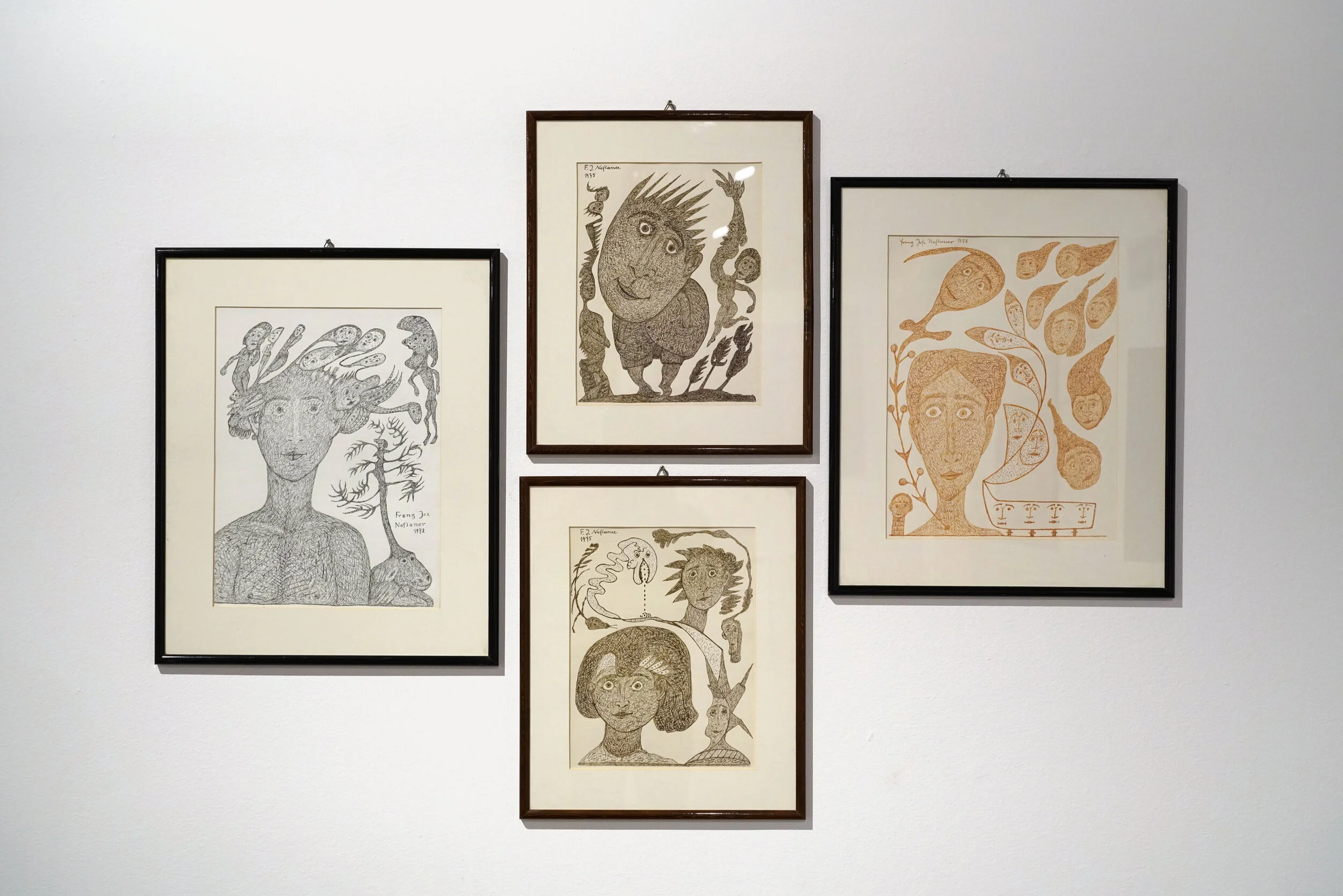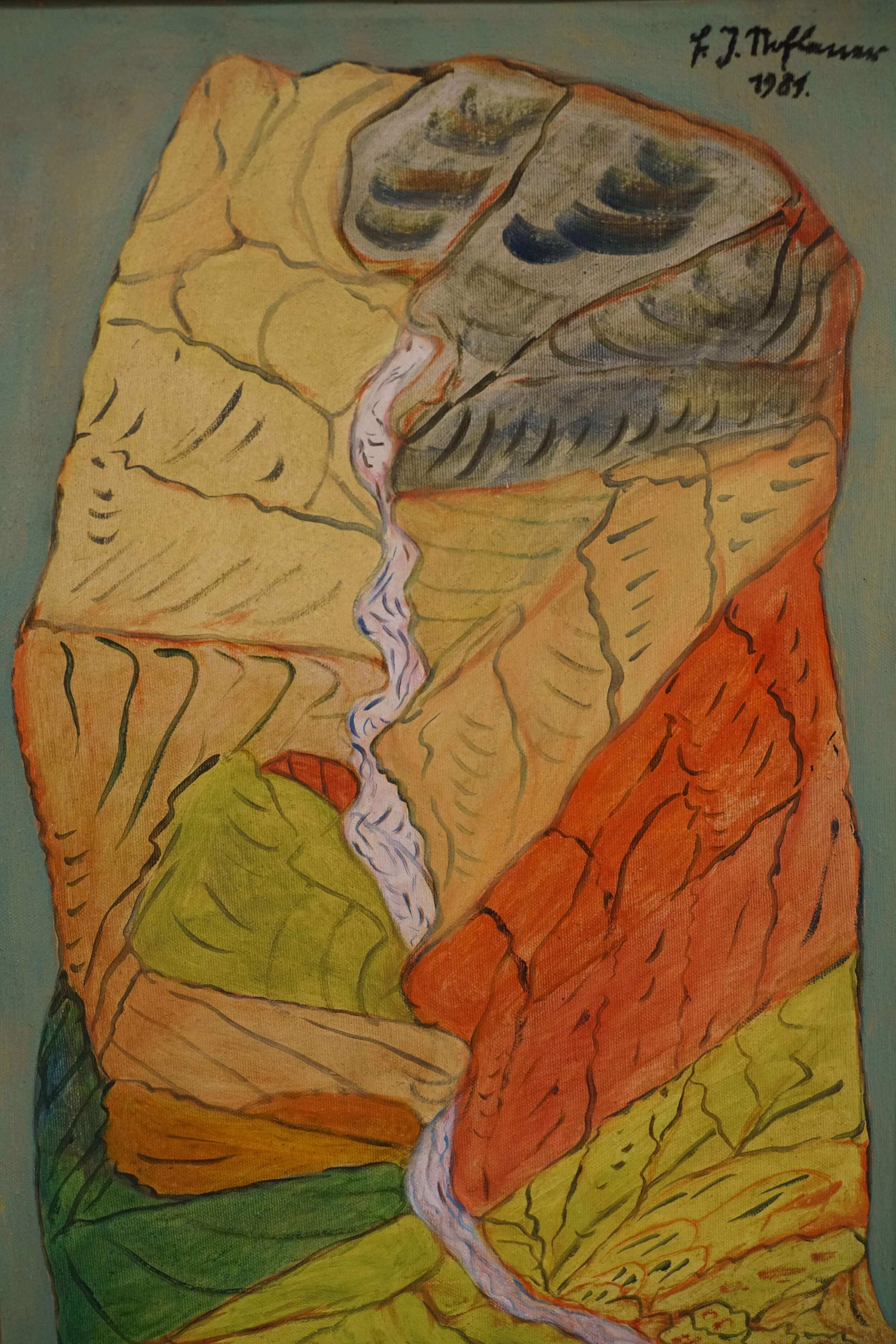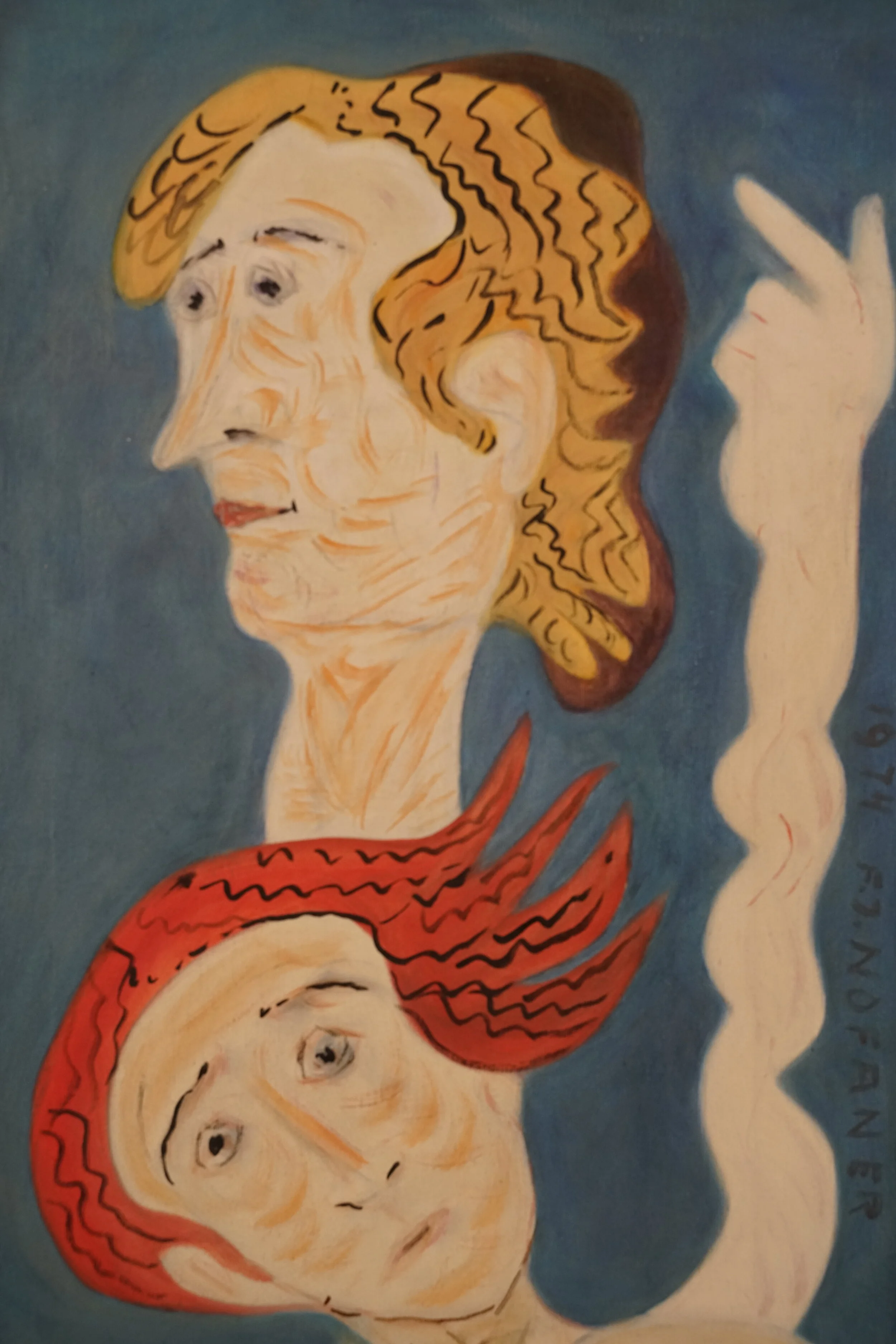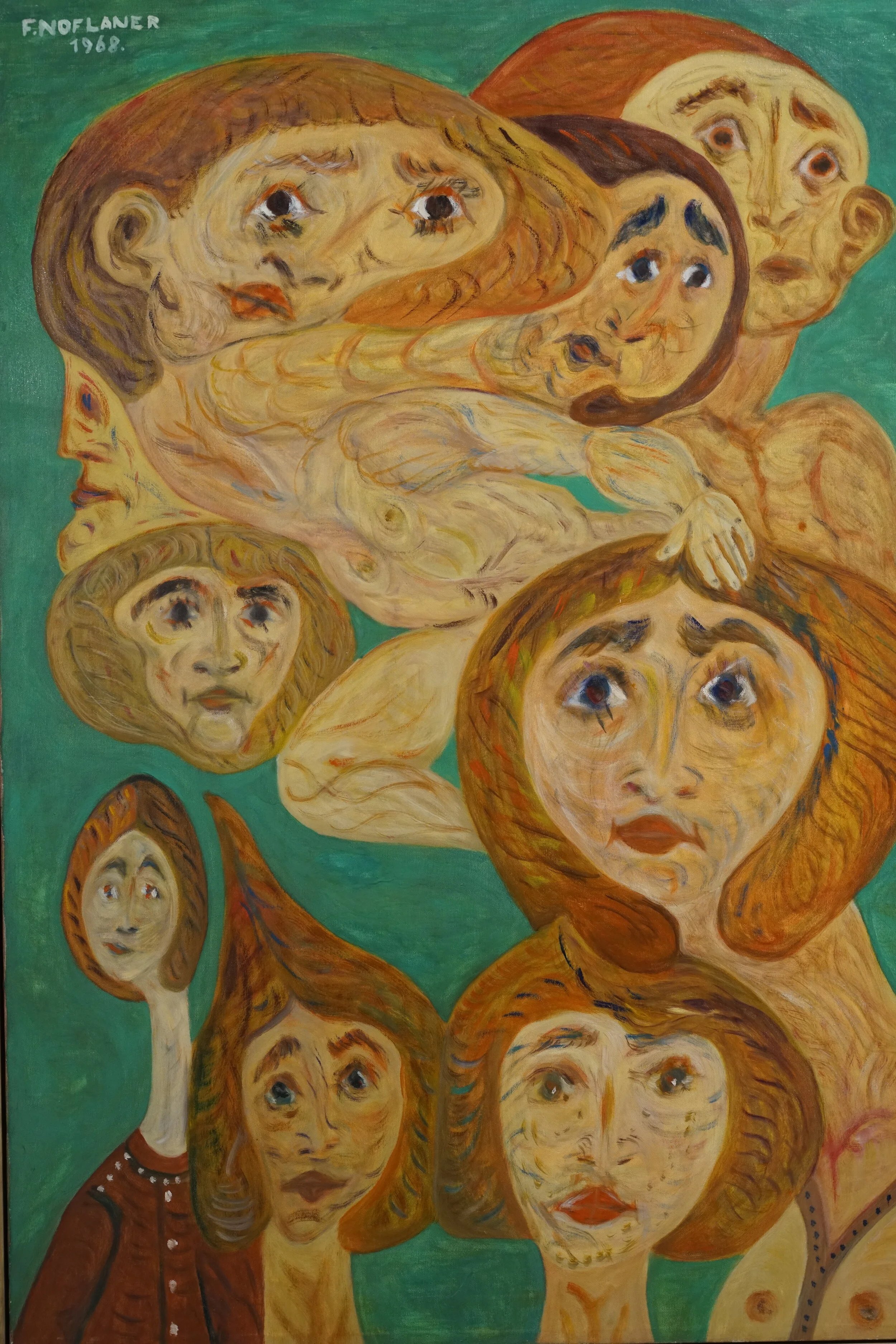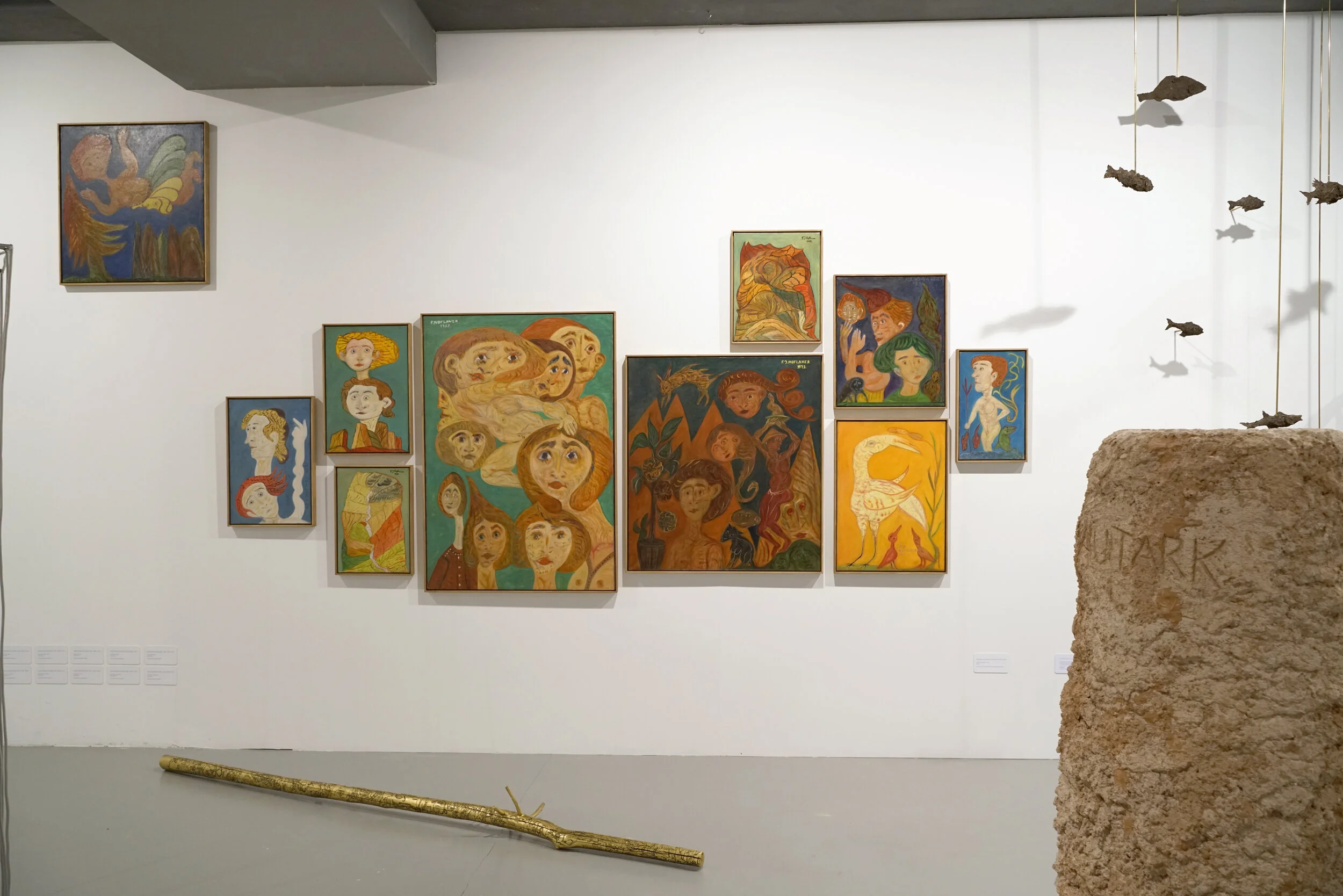
Franz Josef Noflaner
*1904, Val Gardena
†1989, Val Gardena
EN
Franz Josef Noflaner (*1904 – 1989, Val Gardena) was a writer, poet and painter who lived in the Val Gardena. In the course of his lifetime, he created a dialogue between the three disciplines, interconnecting them to form a bizarre ‘worldmaking’ machine. At the centre of his symbol-charged painting is man as he reflects on the fragile system of relations that exists between his own self and nature. With regard to the focus of this year’s Biennale, compositions of surreal images acquire a timeless dimension and may be interpreted in line with his moving language. His poetic texts are like a fabric of beautiful sounds, paired with an ambivalent message that does not lie back in comfort but leaves meanings open like disquieting moments. The archaic, poetic imaginations and archetypal scenes are components pervading both his poems and his pictures. Art, according to Noflacher, is a “wishing machine” that transforms people, things, animals and plants, full of metaphors, as in a laboratory of a pre-modern, timeless world.
For the 7th Biennale Gherdëina, curator Adam Budak and the Italian artist Marinella Senatore let themselves by inspired by the following line from his poetry: “Die Sonne scheint, solange die Sehnsucht weint” (The sun shines as long as desire weeps). Senatore used it, for example, for her Luminaria light sculpture, whose red neon letters illuminate the entrance to the exhibition room at the Sala Trenker. Additionally, a selection of Noflaner‘s paintings and drawings were presented in the Biennale‘s exhibition.
IT
Franz Josef Noflaner (* 1904 – †1989, Val Gardena) fu uno scrittore, poeta e pittore che visse in Val Gardena. Nel corso della sua vita ha creato un dialogo tra le tre discipline combinandole in una bizzarra macchina di “produzione del mondo”. Al centro della sua pittura altamente simbolica c’è l’essere umano, che riflette sul fragile sistema di relazioni tra il proprio io e la natura. Le immagini surreali e oniriche assumono una dimensione senza tempo.
I suoi testi poetici sono come una trama di suoni che vanno di pari passo con parole ambivalenti la cui interpretazione rimane aperta a nuovi significati, talvolta anche inquietanti. L’arcaico, l’immaginario poetico e le scene archetipiche sono componenti che attraversano sia le sue poesie che i suoi quadri. Per Noflaner l’arte è una “macchina dei desideri” che grazie alle sue metafore trasforma le persone, le cose, gli animali e le piante come in un laboratorio di un mondo premoderno e senza tempo.
Oltre a una selezione di dipinti e di disegni di Noflaner, per la Biennale Gherdëina 7 il curatore Adam Budak e l’artista Marinella Senatore hanno preso ispirazione da un verso tratto da una sua poesia che recita “Die Sonne scheint, solang die Sehnsucht weint” (Il sole splende fino a quando il desiderio piange) per trasformarlo in una scultura luminosa, “Luminaria”, all’ingresso dello spazio espositivo nella Sala Trenker.
DE
Franz Josef Noflaner (*1904 – †1989, Gröden) war ein Schriftsteller, Dichter und Maler, der im Grödental lebte. Im Laufe seines Lebens schuf er einen Dialog zwischen den drei Disziplinen, indem er sie zu einer bizarren Maschine der „Welterzeugung” verband. Im Zentrum seiner symbolträchtigen Malerei steht der Mensch, der über das fragile Beziehungssystem zwischen dem eigenen Ich und der Natur reflektiert. Im Hinblick auf den Schwerpunkt der diesjährigen Biennale erhalten die Kompositionen surrealer Bilder eine zeitlose Dimension und können im Einklang mit seiner bewegten Sprache interpretiert werden. Seine poetischen Texte sind wie ein Geflecht aus schönem Klang, gepaart mit einer ambivalenten Aussage, welche sich nicht in Behaglichkeit ausruht, sondern Bedeutungen wie beunruhigende Momente offenlässt. Das Archaische, die poetischen Imaginationen und archetypischen Szenen sind Komponenten, die sich durch seine Gedichte wie auch durch seine Bilder ziehen. Kunst ist bei Noflaner eine „Wunschmaschine“, welche Menschen, Dinge, Tiere und Pflanzen verwandelt und transformiert, voller Metaphern, wie in einem Laboratorium einer vormodernen, zeitlosen Welt.
Für die Biennale Gherdëina 7 ließen sich der Kurator Adam Budak und die italienische Künstlerin Marinella Senatore von folgender Verszeile inspirieren: „Die Sonne scheint, solang die Sehnsucht weint”. So verwendeten sie den Vers als Zitat für die Lichtskulptur der „Luminaria“ von Marinella Senatore, deren rote Neonbuchstaben den Eingang zum Ausstellungsraum des Trenker-Saales erleuchten. Zusätzlich war eine Auswahl von Noflaners Gemälden und Zeichnungen in der Ausstellung der Biennale zu sehen.

